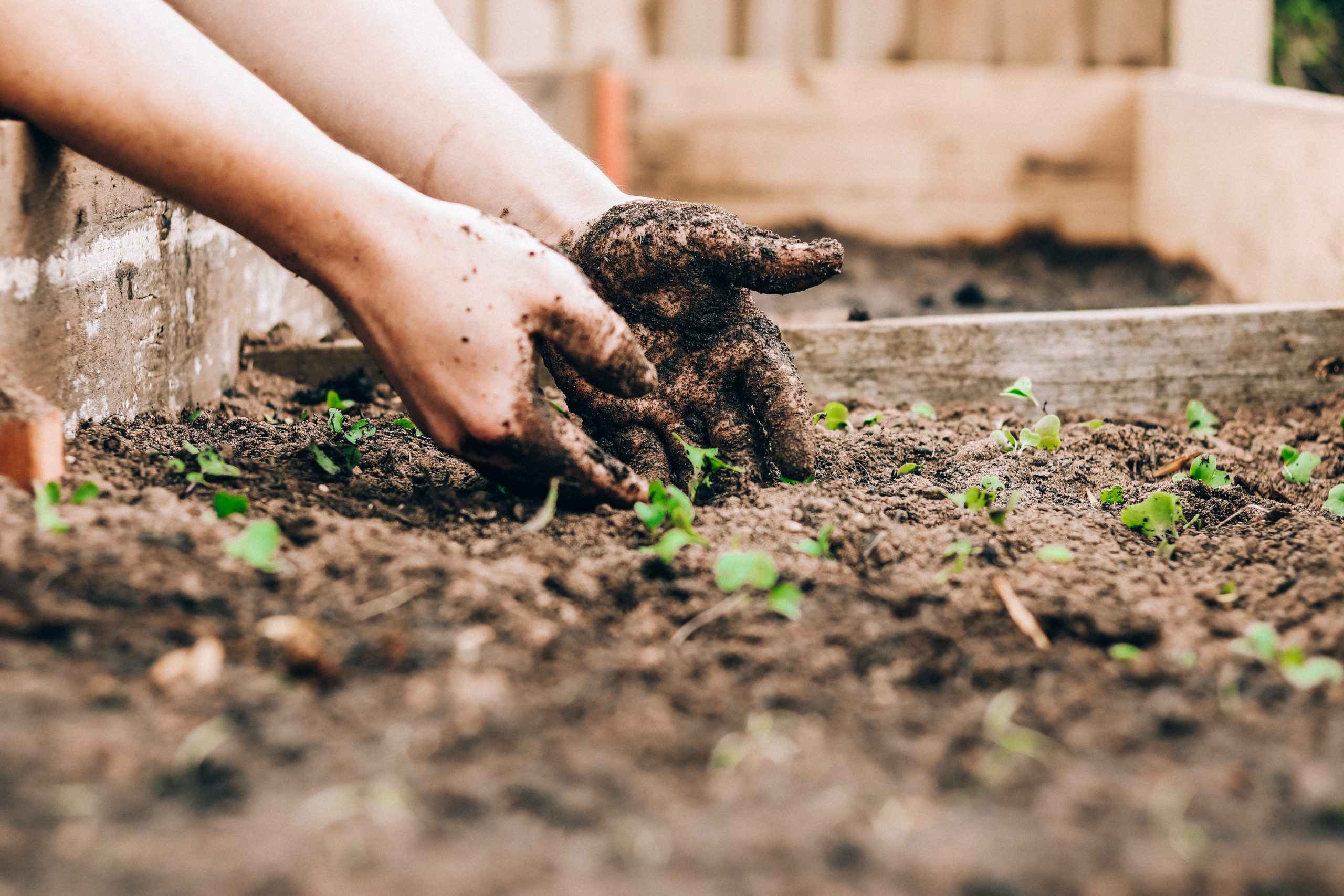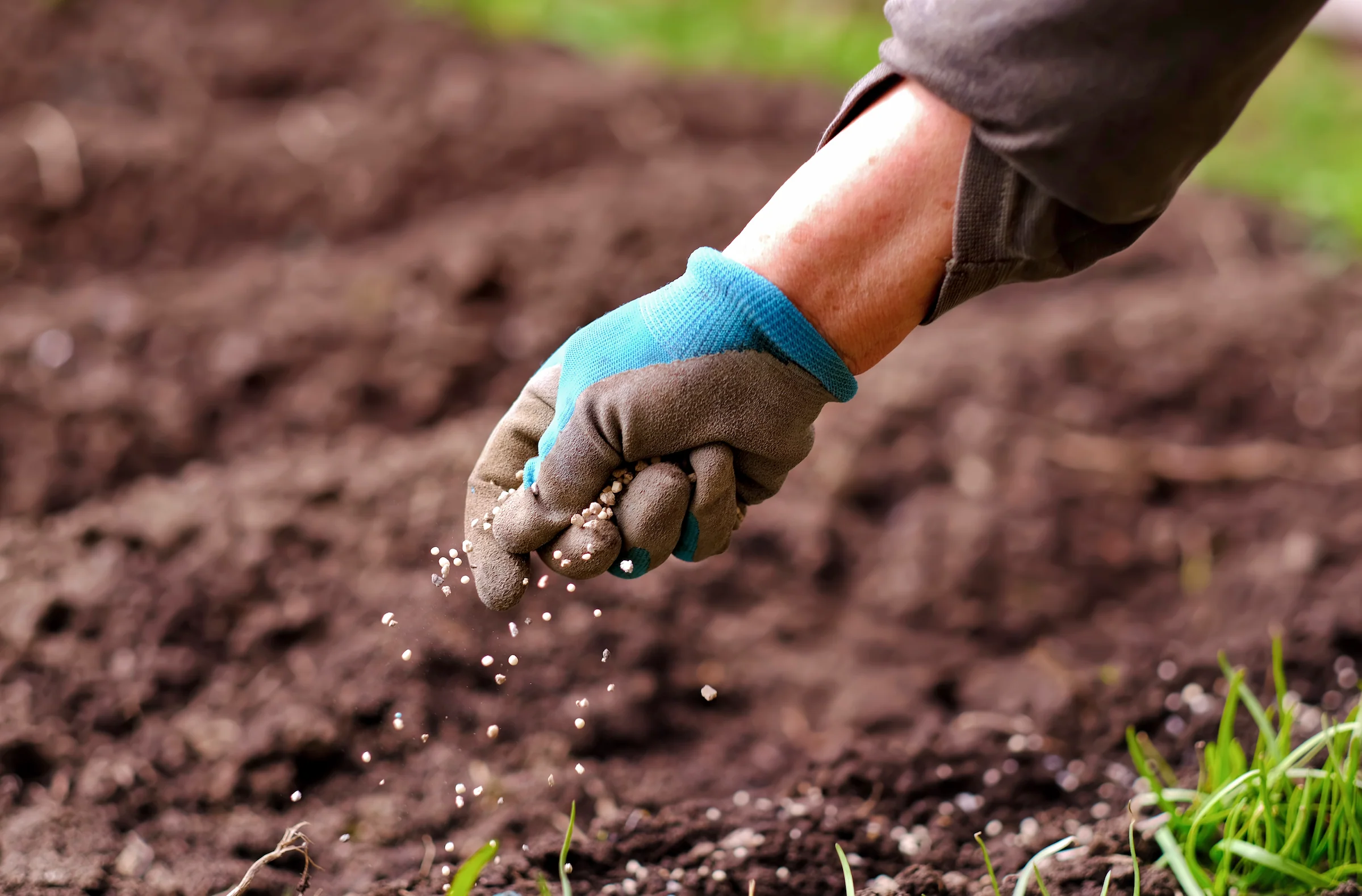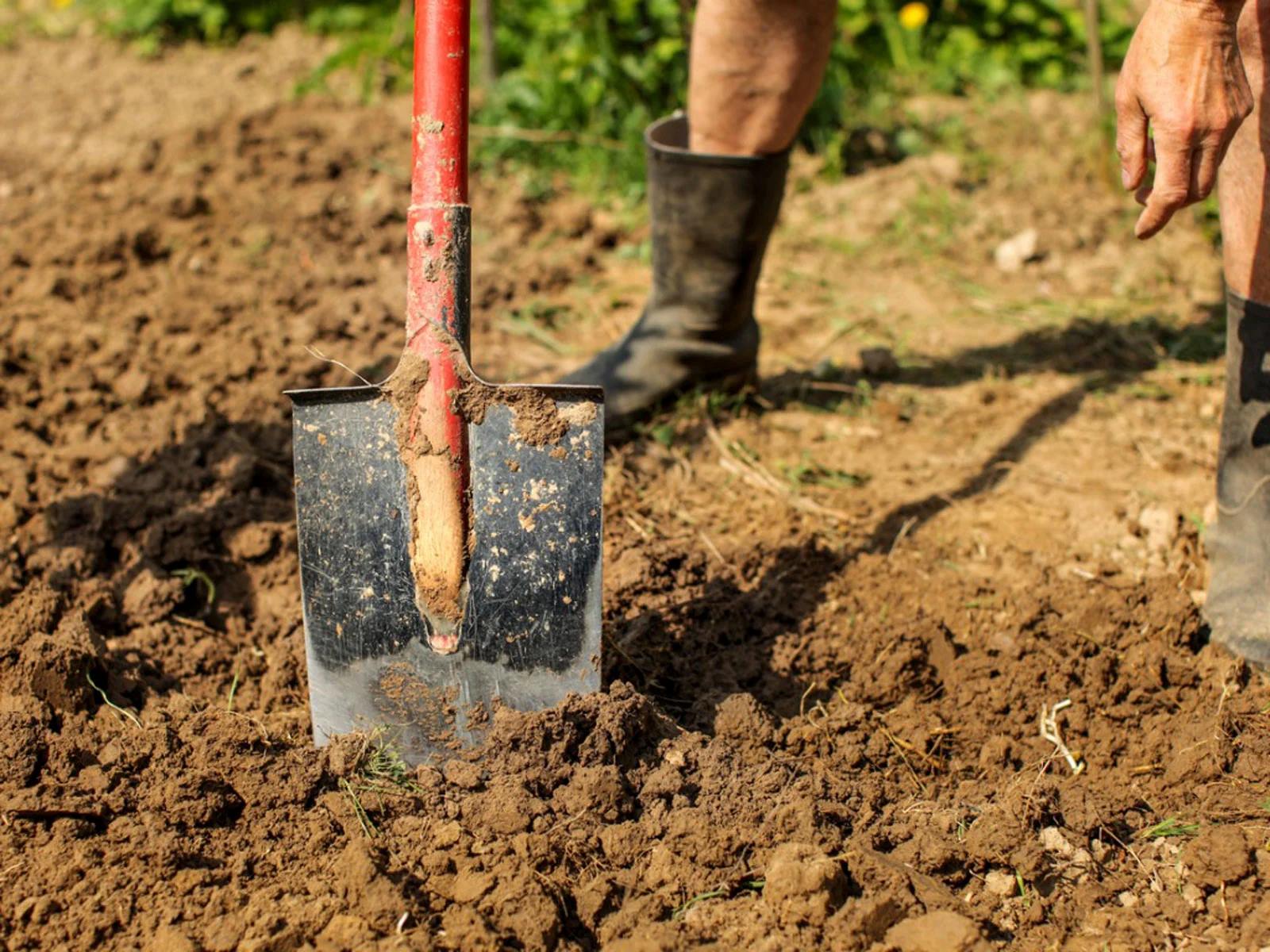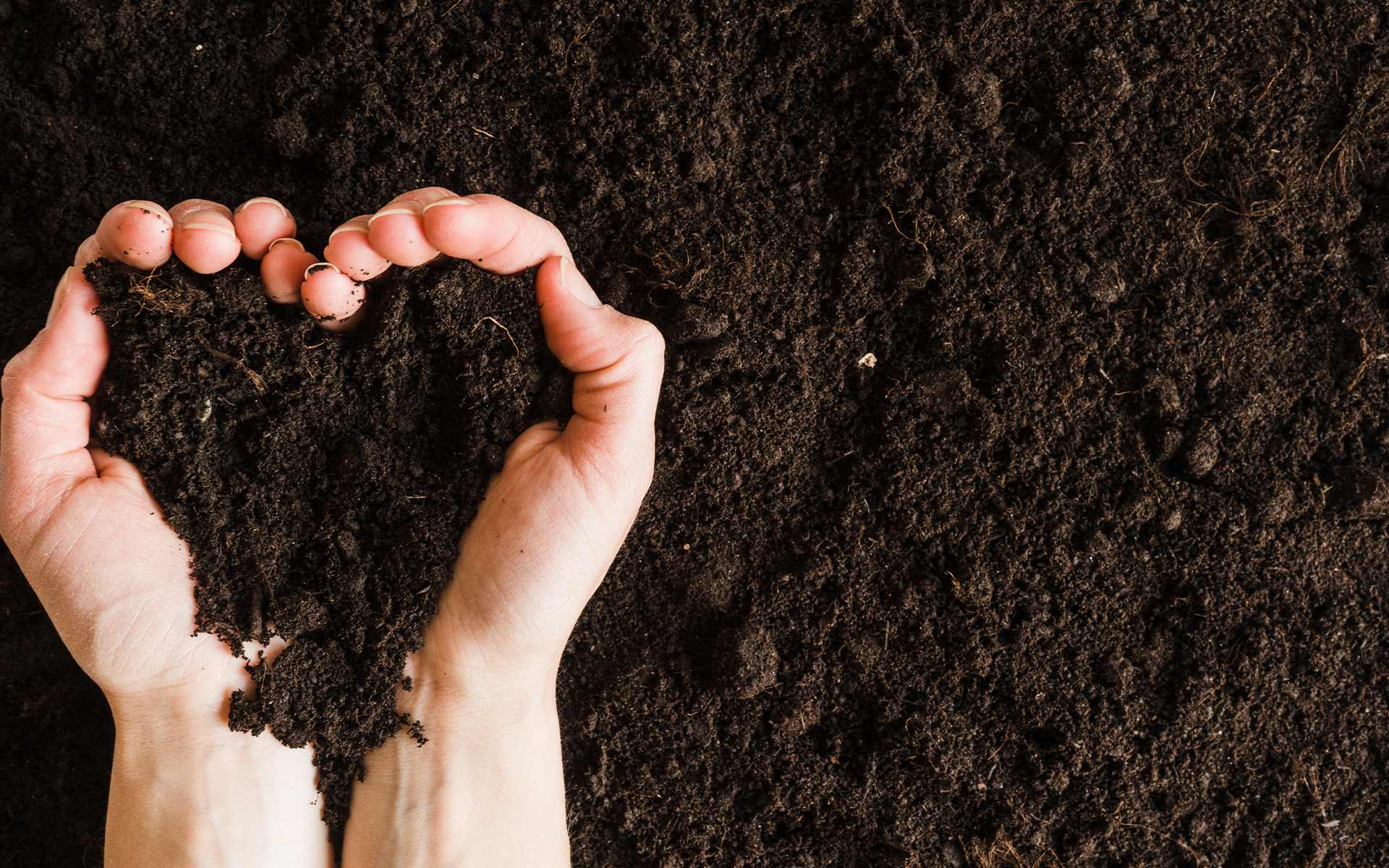Home>Gardening Basics>Understanding Soil>How To Plant Pothos In Soil


Understanding Soil
How To Plant Pothos In Soil
Published: February 8, 2024
Learn how to plant pothos in soil and understand the importance of soil composition for healthy growth.
(Many of the links in this article redirect to a specific reviewed product. Your purchase of these products through affiliate links helps to generate commission for Chicagolandgardening.com, at no extra cost. Learn more)
Table of Contents
Introduction
Soil is the foundation of plant growth, providing essential nutrients, water, and support. When it comes to cultivating plants like pothos, choosing the right soil is crucial for their health and vitality. Pothos, also known as devil’s ivy, is a popular houseplant due to its stunning trailing vines and ability to thrive in various growing conditions.
In this article, we will explore the importance of selecting the right soil for pothos and guide you through the process of planting and caring for them in soil. Whether you’re a beginner looking to add some greenery to your home or an experienced gardener seeking to expand your collection, this article will provide you with valuable insights and tips to ensure your pothos plants thrive.
Pothos plants are known for their tolerance to different soil types, but that doesn’t mean any soil will do. By understanding the specific soil requirements of pothos, you can provide them with the optimal growing conditions for robust growth and lush foliage.
So, let’s dive into the world of soil and discover how to plant pothos in soil effectively!
Choosing the Right Soil for Pothos
When choosing soil for your pothos plants, it’s important to consider their natural habitat and growth requirements. Pothos plants are native to tropical regions and prefer a well-draining soil mix that retains moisture without becoming waterlogged.
An ideal soil mix for pothos consists of a combination of organic matter and inorganic materials. Here are some key factors to consider when selecting the right soil:
- Drainage: Pothos plants dislike sitting in waterlogged soil, as it can lead to root rot. Ensure the soil is well-draining to prevent excess moisture retention.
- Moisture Retention: While good drainage is essential, the soil should also retain enough moisture to keep the plant hydrated. Look for a soil mix that balances both drainage and moisture retention.
- Loose Texture: Pothos roots thrive in loose, well-aerated soil. Avoid using compacted or heavy soils that can impede root growth and cause waterlogging.
- Nutrient-rich: Pothos plants benefit from a soil mix rich in organic matter. This provides essential nutrients and promotes healthy growth. Adding compost or well-rotted organic matter to the soil mix can help improve its fertility.
- pH Level: Pothos plants prefer a slightly acidic to neutral soil pH range between 6.0 and 7.0. Ensure the soil pH is within this range for optimal nutrient uptake.
Commercial potting mixes designed for indoor plants or tropical plants often make an excellent choice for pothos. These mixes are usually well-balanced, lightweight, and provide the necessary nutrients and drainage qualities.
Alternatively, you can create your own well-draining soil mix by combining equal parts of peat moss, perlite, and garden soil. This DIY mix allows for good drainage while retaining adequate moisture for the plants.
Remember, the quality of the soil directly affects the overall health and growth of your pothos plants. So, take the time to choose the right soil mix that meets their specific needs.
Selecting a Suitable Container
Choosing the right container for your pothos plants is just as important as selecting the appropriate soil. The container you use can impact the plant’s growth, development, and overall health. Here are some factors to consider when selecting a suitable container:
- Size: Pothos plants have trailing vines that can grow several feet long. To accommodate their growth, choose a container that is at least two inches larger in diameter than the current root ball. This gives the roots room to spread and prevents them from becoming overly crowded.
- Drainage: Ensure that the container has drainage holes at the bottom to allow excess water to escape. Proper drainage helps prevent waterlogging, which can lead to root rot.
- Material: Containers made from materials like plastic, terracotta, or glazed ceramic work well for pothos plants. Plastic containers are lightweight and retain moisture, while terracotta and ceramic containers are porous and allow for better airflow to the roots.
- Aesthetics: Consider the overall look and feel of your space when choosing a container. Pothos plants are versatile and can thrive in various container styles and colors. Select a container that complements the decor and enhances the visual appeal of your indoor space.
- Accessibility: If you plan on moving the plant frequently or if it’s a hanging basket, choose a container with handles or hooks for easy transportation. This makes it convenient to take care of your pothos plants and relocate them as needed.
Additionally, it’s important to note that when repotting pothos plants, avoid using containers that are too large. While it may seem like providing extra space for the roots is beneficial, using an excessively large container can hold excess moisture and lead to waterlogged soil.
Remember to clean the container before planting to remove any dirt or debris that could harbor pests or diseases. This will help ensure a clean and healthy environment for your pothos plants.
By carefully selecting a suitable container, you provide your pothos plants with a comfortable and conducive space to grow and thrive.
Preparing the Soil for Planting
Before planting your pothos in soil, it’s crucial to properly prepare the soil to create an optimal growing environment for the plant. Here are the steps to follow when preparing the soil:
- Clear the soil: Start by removing any weeds, rocks, or debris from the area where you plan to plant the pothos. This will ensure the plant has access to the necessary nutrients and prevent competition from unwanted plants.
- Loosen the soil: Pothos plants thrive in loose soil that allows for proper root development. Use a garden fork or a hand trowel to gently loosen the soil in the planting area. Avoid excessive digging or compacting the soil, as this can hinder root growth.
- Amend the soil: If the soil in your garden is heavy clay or lacks organic matter, it may be beneficial to amend it. Incorporate organic materials such as compost, well-rotted manure, or peat moss into the soil. This helps improve drainage, adds nutrients, and enhances the soil’s moisture-holding capacity.
- Ensure proper pH: Pothos plants prefer slightly acidic to neutral soil with a pH range of 6.0 to 7.0. Test the soil pH using a soil testing kit, and if necessary, adjust it by adding lime to raise the pH or sulfur to lower the pH.
- Mix in slow-release fertilizer: Pothos plants benefit from regular feeding. Prior to planting, mix in a slow-release fertilizer into the soil according to the package instructions. This will provide a steady supply of nutrients to the plant over an extended period.
- Water the soil: Once the soil is prepared, give it a thorough watering to ensure it is evenly moist. This will encourage better root establishment and help settle the soil around the plant’s roots.
By taking the time to prepare the soil properly, you create the ideal conditions for your pothos plants to grow and flourish. This initial step sets the foundation for their health and productivity in the long run.
Planting Pothos in Soil
Once you have chosen the appropriate soil and prepared it, it’s time to plant your pothos. Follow these steps to ensure successful planting:
- Choose a healthy plant: Select a healthy pothos plant with vibrant foliage and strong stems. Avoid plants with yellowing leaves, signs of pests, or rootbound roots.
- Prepare the container: Fill the chosen container with the prepared soil, leaving enough space at the top to accommodate the plant’s root ball.
- Remove the plant from the nursery pot: Gently tap or squeeze the sides of the nursery pot to loosen the plant. Carefully slide the plant out, holding the base of the stems for support.
- Inspect the roots: Check the roots for any signs of rot or damage. If necessary, trim any brown or mushy roots with clean, sterilized pruning shears.
- Plant the pothos: Create a small hole in the center of the prepared soil in the container. Place the root ball into the hole, ensuring that the top of the root ball sits level with the soil surface. Gently backfill the hole with soil, pressing lightly to secure the plant in place.
- Water thoroughly: Give the newly planted pothos a thorough watering, allowing the water to saturate the soil and reach the roots. This will help settle the soil and promote root establishment.
- Place in a suitable location: Choose a location that provides bright, indirect light for your pothos plant. Avoid placing them in direct sunlight, as it can scorch the leaves. Pothos plants can adapt to different light conditions, but they prefer moderate to bright light.
- Maintain ideal temperature and humidity: Pothos plants thrive in moderate temperatures between 60°F (15°C) and 85°F (29°C). Keep the humidity levels around 50-70% to mimic their tropical habitat. You can increase humidity by placing the container on a humidity tray or using a room humidifier.
Remember to monitor the moisture levels of the soil and water your pothos when the top inch of soil feels dry to the touch. Avoid overwatering, as this can lead to root rot. Allow the soil to dry out slightly between waterings.
By following these planting guidelines, you can ensure a smooth transition for your pothos plants from their nursery pots to their new home in the soil.
Providing Proper Watering and Drainage
Proper watering and drainage are crucial for the health and well-being of your pothos plants. These factors directly impact the plant’s growth, development, and overall vitality. Here are some guidelines to ensure you are providing adequate water and drainage:
- Watering: Pothos plants prefer slightly moist soil, but they are susceptible to root rot if overwatered. Water your pothos when the top inch of soil feels dry to the touch. Use room temperature water and thoroughly saturate the soil, allowing excess water to drain out. Avoid letting the plant sit in standing water, as it can lead to waterlogging and root rot.
- Drainage: Adequate drainage is essential to prevent waterlogged soil. Ensure your container has drainage holes to allow excess water to escape. If using decorative containers without drainage holes, place a layer of gravel or pebbles at the bottom of the container to create a reservoir for excess water.
- Frequency of watering: The frequency of watering depends on various factors such as humidity, temperature, and the type of soil mix used. Monitor the moisture level of the soil regularly and adjust your watering schedule accordingly. Avoid overwatering or underwatering, as both can cause stress to the plant.
- Humidity: Pothos plants thrive in moderate to high humidity levels. If the air in your home is particularly dry, consider using a room humidifier or placing a tray of water near the plant to increase humidity.
- Water quality: Pothos plants are sensitive to the quality of water. They prefer water that is free from chlorine and harsh chemicals. If you are using tap water, allow it to sit overnight to let the chlorine dissipate before using it to water your plants. Alternatively, you can use filtered or distilled water.
- Signs of overwatering: If you notice yellowing of the leaves, wilting, or a foul odor coming from the soil, it may indicate overwatering. Adjust your watering routine, allowing the soil to dry out before watering again.
- Signs of underwatering: Drooping leaves, dry and crispy edges, or soil that pulls away from the sides of the container are signs of underwatering. Increase the frequency of watering to ensure the plant receives enough moisture.
By providing proper watering and ensuring adequate drainage, you can maintain the health and vitality of your pothos plants. Striking the right balance will promote optimal growth and prevent issues such as root rot.
Caring for Pothos Plants in Soil
Caring for pothos plants in soil involves a combination of providing optimal growing conditions and regular maintenance. These easy-to-care-for plants can thrive with minimal effort, making them a popular choice for both beginner and experienced gardeners. Here are some essential care tips for pothos plants:
- Light requirements: Pothos plants enjoy bright, indirect light, but they can also tolerate lower light conditions. Place your pothos in a location where it receives moderate to bright, filtered sunlight. Avoid direct sunlight, as it can scorch the leaves.
- Temperature: Pothos plants thrive in temperatures between 60°F (15°C) and 85°F (29°C). Avoid exposing them to extreme temperature fluctuations or placing them near drafts, as it can stress the plant.
- Fertilizing: Feed your pothos plants every 2-4 weeks during the growing season (spring and summer) with a balanced, water-soluble fertilizer. Dilute the fertilizer according to the package instructions and apply it to moist soil. Avoid overfertilization, as it can lead to nutrient burn.
- Pruning: Regular pruning helps maintain the shape and appearance of your pothos plants. Trim back any leggy or overgrown vines to encourage bushier growth. You can also propagate the cuttings to create new plants.
- Vine support: Pothos plants are known for their trailing vines. Provide a small trellis, moss pole, or other support for the vines to climb if you want to encourage vertical growth. This can enhance the aesthetics of your plant and create a fuller, more lush appearance.
- Pest control: Monitor your pothos plants regularly for common houseplant pests such as spider mites, mealybugs, and scale insects. If you spot any pests, isolate the affected plant and treat it with an appropriate insecticidal soap or neem oil.
- Propagation: Pothos plants are easy to propagate. You can propagate them through stem cuttings placed in water or directly in a well-draining soil mix. Propagation allows you to expand your pothos collection or give plants as gifts to friends and family.
- Regular inspections: Take the time to inspect your pothos plants regularly. Check for any signs of yellowing leaves, pests, or drainage issues. Promptly address any problems to prevent them from worsening and affecting the overall health of the plant.
By implementing these care practices, you can ensure that your pothos plants remain healthy, vibrant, and beautiful for years to come. With their low maintenance requirements and resilience, pothos plants are an excellent choice for indoor gardening enthusiasts.
Troubleshooting Common Issues
While pothos plants are generally hardy and resilient, they can encounter some common issues. Understanding these problems and knowing how to troubleshoot them can help ensure the continued health and vitality of your plants. Here are some common issues you may encounter with pothos plants:
- Yellowing leaves: Yellow leaves can indicate various issues, such as overwatering, underwatering, nutrient deficiencies, or inadequate light. Adjust the watering routine, ensure proper drainage, check the soil nutrients, and provide adequate light levels to address this problem.
- Root rot: Root rot occurs when the roots are constantly waterlogged, leading to decay and plant stress. To prevent root rot, ensure proper drainage by using well-draining soil and pots with drainage holes. Adjust the watering routine to avoid overwatering, and consider repotting the plant in fresh, healthy soil.
- Pest infestations: Pothos plants can occasionally be affected by pests such as spider mites, mealybugs, or scale insects. Regularly inspect the leaves for signs of pests and treat affected plants with appropriate organic insecticides or neem oil. Isolate infested plants to prevent the pests from spreading.
- Leaf browning: Brown leaf tips or edges can occur due to several reasons, including underwatering, low humidity, or exposure to drafts. Adjust the watering routine to ensure the soil stays moist but not soggy, increase humidity levels around the plant, and avoid placing it near drafts or vents.
- Lack of growth: If your pothos plant is not experiencing new growth, it may indicate various factors such as insufficient light, lack of nutrients, or rootbound conditions. Evaluate the lighting conditions, fertilize the plant with a balanced fertilizer, and consider repotting into a larger container if the roots are tightly packed.
- Leggy growth: Pothos plants can become leggy and have long, sparse vines if they do not receive enough light. Ensure they receive moderate to bright, indirect light. Prune back leggy vines to encourage bushier growth, and provide support such as a trellis to promote vertical growth.
When troubleshooting issues with your pothos plants, it’s important to address the problem as early as possible. Regularly inspecting your plants, providing the right growing conditions, and promptly addressing any issues will help keep your pothos plants healthy and thriving.
Conclusion
Growing pothos in soil can be a rewarding experience, as these resilient plants thrive in the right conditions and bring beauty to any indoor space. By choosing the right soil, selecting a suitable container, and properly preparing the soil, you provide a solid foundation for the plant’s growth and development.
Remember to provide adequate watering and drainage, ensuring the soil remains moist but well-drained to prevent issues such as root rot. Caring for your pothos plants involves maintaining optimal light levels, temperature, and humidity. Regular pruning, fertilizing, and monitoring for pests will help your pothos plants flourish.
In troubleshooting common issues, you can quickly address any problems that may arise, such as yellowing leaves or pest infestations, ensuring the continued health of your plants. With proper care and attention, your pothos plants will reward you with their lush foliage and trailing vines.
So, take the time to understand the specific needs of your pothos plants, observe their growth patterns, and adjust your care routine accordingly. With a little love and attention, your pothos plants will add beauty and greenery to your home or office space for years to come.




